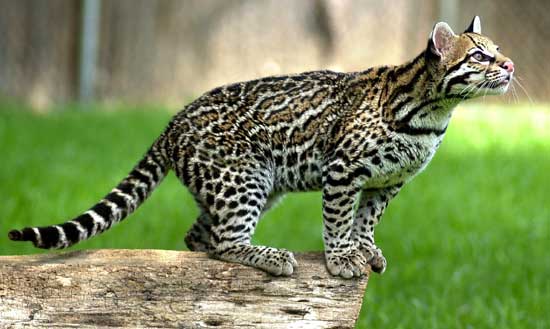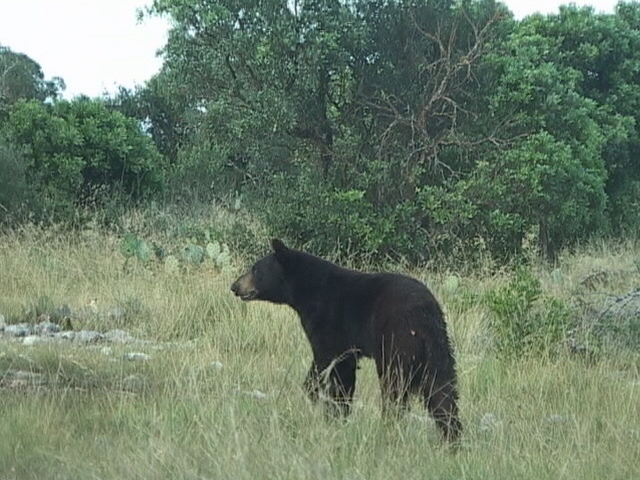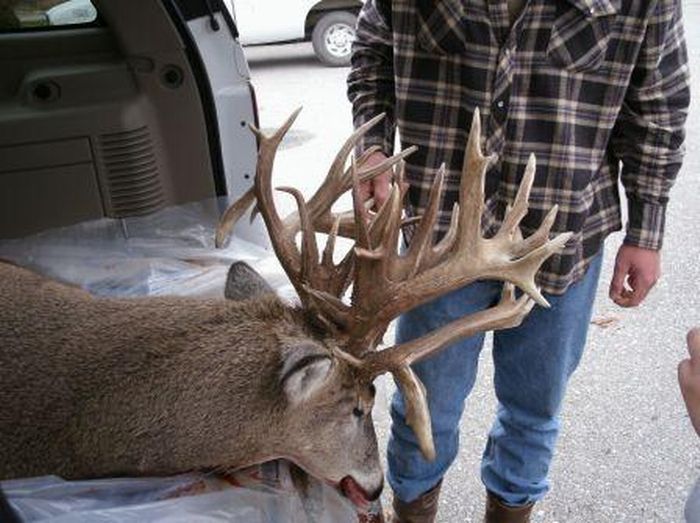Ocelots are interesting cats primarily found in suitable habitat in South and Central America, but are also live in the southern tip of North America. Ocelots are about twice the size (25 to 30 pounds) of the average house cat, but much more regal, at least in my opinion. The ocelot is a sleek animal with a gorgeous dappled coat that even more handsome than the more common bobcat. These nocturnal felines use keen sight and hearing to hunt rabbits, rodents, fish, and frogs.
Like other cats, ocelots are adapted for eating meat. They have pointed canine teeth used to deliver a killing bite, and sharp molars that can tear food with ease. Ocelots tear their food to pieces and swallow it whole. In addition, their rough and tough tongues can clean the bones of their prey spotless.
Ocelots are quite nimble, with the ability to take to the trees and hunt monkeys and birds. Unlike many cats, ocelots do not avoid water and can swim very well. Most ocelots live under the leafy canopies of South American rain forests, but they also inhabit brushland habitat in Mexico and can be found as far north as South Texas. These cats can adapt to human habitats and are sometimes found in the vicinity of villages or other settlements.
Ocelots have very striking patterns on their fur, which has made them the target of market hunters. As such, they are quite rare, including in Texas where they are endangered. In fact, ocelots are protected in the United States and most other countries where they are found.


